THE CASE FOR HYDROGEN AS CLEAN FUEL
The long term solution for clean energy is decarbonisation, decentralisation and digitalisation. Hydrogen, being an energy carrier rather than a source, fits in this pattern.
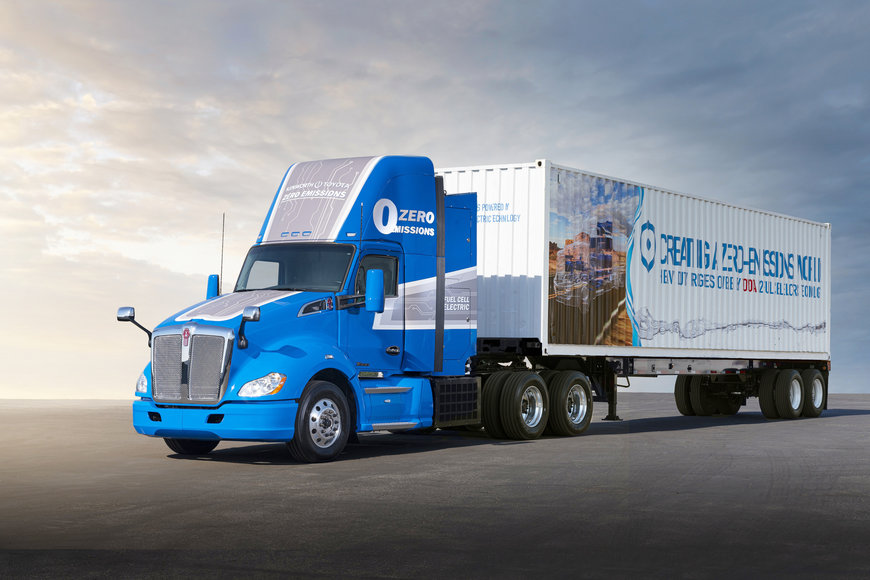
Toyota 2nd generation hydrogen truck.
The world is in the grip of severe climatic events for some time now, but 2021 has brought home the severity like never before. Sample these developments:
- The month of July 2021 witnessed unprecedented flood situations in Germany and Belgium in Europe, the Henan province of China, and the Indian State of Maharashtra, besides other places. A few weeks earlier, parts of Canada witnessed an unprecedented heat wave, with temperatures soaring to almost 50-degree Centigrade, in what is described as a once-in-a-1000-year event.
- During the same period, dozens of wildfires raged across western United States, a region experiencing an unrelenting drought. The largest of these fires, termed the Bootleg Fire, consumed more than 400,000 acres of forest, the dry weather making the efforts to put them out difficult. Last heard, these fires are still raging at various places. In addition, California is witnessing an unprecedented water crisis.
- Hurricane Ida, which struck Louisiana, USA, on August 29, 2021 is believed to have intensified due to the effects of climate change, killing scores of people and plunging millions into darkness. The after effects spread to four states causing unprecedented flooding in New York and New Jersey.
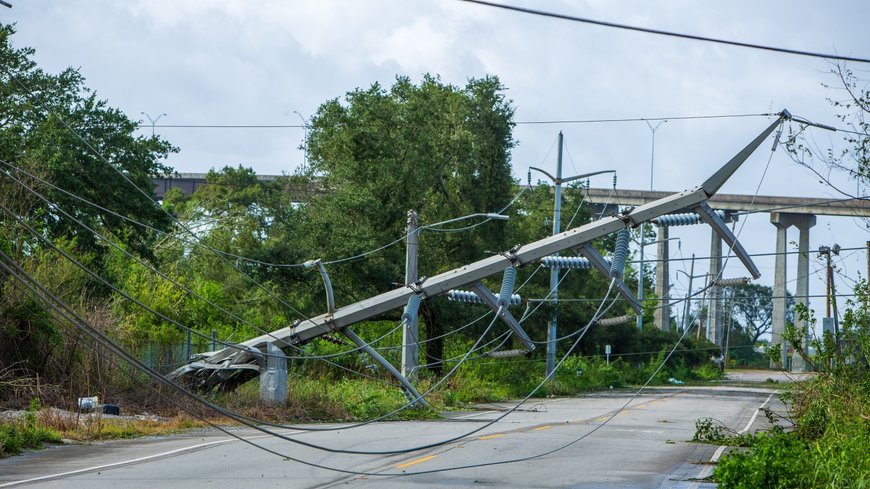
Damaged power lines in the aftermath of Hurricane Ida. Image source: Entergy Corp.
The World Meteorological Organization’s State of the Global Climate 2020 report has documented various indicators of the climate system. These include greenhouse gas concentrations, increasing land and ocean temperatures, sea level rise, melting ice and glacier retreat and extreme weather. Consequently, the number of weather-related disasters to hit the world has increased five-fold over the past 50 years. While the world has woken up to the disastrous consequences of climate change, the efforts to battle these are woefully inadequate. There are positive developments like the adoption of the Paris Agreement in 2015, and the movement towards renewable energy and electrification of the automobile. There is also the growing realisation and commitment by several countries led by the European Union, and over a thousand big global companies, to cut emissions and become carbon neutral by 2050 or earlier. China has pledged to do so by 2060.

Wildfires raged across western United States. Image source: Marcus Kauffman, Unsplash.
So where does Hydrogen – the lightest element and under standard conditions a colourless, odourless, non-toxic and highly combustible gas – figure in this? To understand that, one must look at fossil fuels, the leading cause of rapid climate change in recent years. According to the US Environmental & Energy Study Institute (EESI), fossil fuels currently supply about 80 per cent of the world’s energy. Burning of fossil fuels releases large amounts of carbon dioxide (CO2), which is a greenhouse gas, which in turn leads to build-up of heat in the atmosphere, causing global warming. The use of fossil fuels in automobiles and power plants also releases nitrogen into the atmosphere, which being already present in the air in abundant measure, is causing a surplus that contributes to the formation of smog and acid rain. The solution to this crisis is clean and green energy from renewables like wind and solar power. While hydroelectric power is considered clean and renewable it contributes just over 16 per cent of total global electricity production. Hydrogen is the other clean source of energy with great potential.
According to a McKinsey study for the Hydrogen Council, hydrogen could become a major asset in the fight against climate change, cutting CO2 emissions by 20% between now and 2050. The Hydrogen Council is a global CEO-led initiative of leading companies with a united vision and long-term ambition: for hydrogen to foster the clean energy transition for a better, more resilient future. The study indicates hydrogen as an energy source is a highly credible alternative to fossil fuels and a substantial addition to existing renewables: in less than 25 years, hydrogen could account for 18% of global energy consumption and reduce CO2 emissions from current levels by some 6 gigatonnes.
Hydrogen in industry
Hydrogen was first produced in a laboratory by Robert Boyle in 1671 but recognised as an element only in 1766 by Henry Cavendish. It took another 125 years to find its various chemical applications. Since then hydrogen has been widely used in various industrial applications, mainly in refineries for hydro-desulfurisation and hydrocracking operations, and in production of ammonia, the raw material for fertilizers. These two industries account for almost 80% of hydrogen consumption today, with another 10% going for Methanol production. That means only 10% hydrogen is presently used in all other applications covering food, metal working, welding, flat glass production and electronics industries; medical uses, and fuel cell applications in the automotive sector. This indicates the scope and potential for use of hydrogen in the battle against climate change.

Swedish steel company SSAB produced the first fossil-free steel in the world.
The steel industry is the latest to contemplate the use of hydrogen as a source of energy in order to reduce its carbon footprint. After power generation, the steel industry is the largest producer of carbon dioxide, accounting for up to 9% of total fossil fuel emissions (Source: World Steel Association). In July 2021, Swedish steelmaker SSAB announced that it has rolled the first steel produced using Hydrogen Breakthrough Ironmaking Technology (HYBRIT ), i.e., produced by 100% fossil-free hydrogen instead of coal and coke, with good results. “The first fossil-free steel in the world is not only a breakthrough for SSAB, it represents proof that it’s possible to make the transition and significantly reduce the global carbon footprint of the steel industry. We hope that this will inspire others to also want to speed up the green transition,” said Martin Lindqvist, President and CEO of SSAB, on the occasion. SSAB aims to cut its CO2 emissions in Sweden by 25% by as early as 2025, and by 2040, the plan is to eliminate most of the remaining CO2 emissions. Other global steel makers like ArcelorMittal and Thyssenkrupp in Europe and China’s Baosteel Group, are also pursuing similar measures for carbon reduction. ArcelorMittal is planning to convert its Hamburg plant to climate-neutral steel production by 2030. According to the International Energy Agency, to meet the global climate and energy goals, steel industry emissions must fall by at least half by 2050. Cement industry is another energy intensive industry and could follow the steel example.
Hydrogen as automotive fuel
Elon Musk famously declared in 2019 that the idea of hydrogen fuel cell (he called it fool cell) car is ‘mind-bogglingly stupid,’ but that is not necessarily true as innovators tend to dismiss rival technologies. Transportation accounts for approximately 28% of global energy demand, and approximately 24% of global CO2 emissions. That is too huge a window of opportunity to miss for any technology that shows promise.
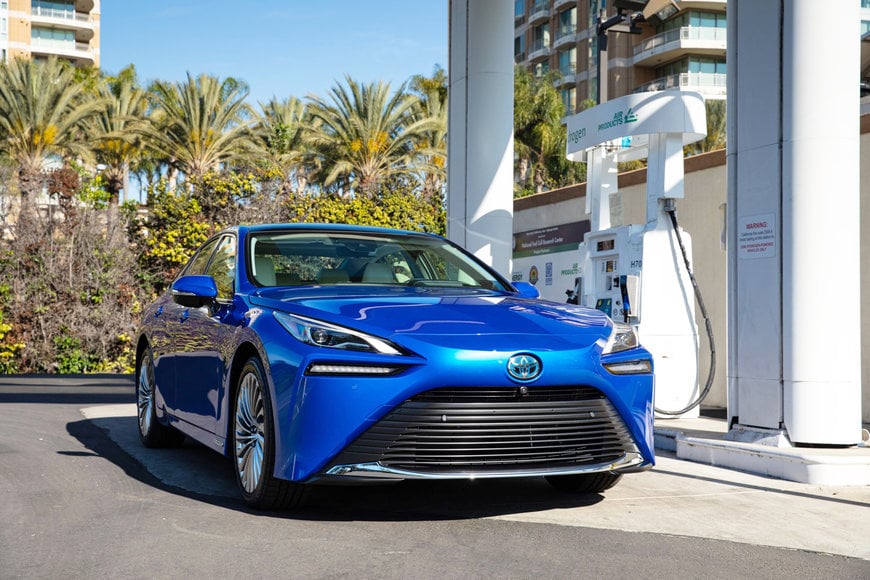
The 2021 Mirai Hydro Blue, exclusive to the Limited grade, by Toyota Motors.
At the moment, battery electric vehicles (BEV) are having the edge, but there are companies betting on fuel cell electric vehicles (FCEV) as a more sustainable option in future. Presently there are only three companies – Toyota, Honda and Hyundai – offering FCEVs in the passenger car segment while almost every major automaker has at least one model of BEV on offer. The major advantage of a FCEV, which runs on hydrogen, is the long range it offers apart from the refuelling time of a regular gasoline vehicle, the disadvantage at the moment being the higher cost as well as the limited number of refuelling stations. But there are other considerations as well. Overall, it appears that BEVs are more suited to short commutes while FCEVs make better sense for travelling long distances, with distinct advantages for long haul trucks on account of large onboard storage capacity.
A recent whitepaper jointly published by Deloitte and Ballard Power Systems, a global provider of clean energy solutions, examines the issue of FCEV viability at some length. The Total Cost of Ownership (TCO) analysis of this study shows consistent and highly encouraging results. Even when ignoring qualitative benefits of hydrogen, i.e., zero-emission at the use end, among others, FCEVs are forecast to become cheaper from a TCO perspective compared to BEVs and internal combustion engines in commercial vehicles over the next 10 year period in all use cases.
The focus then – from governments across the world as well as major manufacturers – is on the commercial vehicles segment where hydrogen is seen as having a greater potential. For example, in April 2021, Daimler Truck AG and Volvo Group, major players in the CV industry, officially outlined their pioneering roadmap for the new fuel-cell joint venture cellcentric, as part of an industry-first commitment to accelerate the use of hydrogen-based fuel cells for long-haul trucks and beyond. “Hydrogen-powered fuel-cell electric trucks will be key for enabling CO2-neutral transportation in the future. In combination with pure battery-electric drives, it enables us to offer our customers the best genuinely locally CO2-neutral vehicle options, depending on the application,” says Martin Daum, Chairman of the Board of Management of Daimler Truck AG and Member of the Board of Management of Daimler AG.
Daimler Truck and Volvo Group are not the only companies working on hydrogen powered commercial vehicles. Toyota has begun testing its new generation of hydrogen fuel cell technology for heavy goods vehicles in the US, based on the same system used in its hydrogen-powered passenger car Mirai, but with a flexible design that could be used by different truck manufacturers. Even Hyundai plans to offer hydrogen fuel cell versions of all its commercial vehicles by 2028 – the company has already commercialised an all-fuel-cell truck model, the Hyundai XCIENT launched in 2020. The BMW Group has clear goals for effective climate protection and sustainable mobility up to the year 2030. It recently hosted the Central German Hydrogen Summit, which took place at BMW Group Plant Leipzig in May 2021. As a first step, hydrogen is already being used in logistics to power tractors and forklifts carrying required parts to the assembly lines.

The Hyundai XCIENT launched in 2020.
The Bosch Group is also working with Qingling Motors, the Chinese truck manufacturer through a joint venture in China. “We are now literally picking up speed in the industrialisation of the fuel cell. Innovative technologies and strategic partnerships are the ideal fuel for rapidly achieving the goal of making road traffic as climate-neutral as possible,” says Stefan Hartung, Bosch board of management member and chairman of the Mobility Solutions business sector. For years now, Bosch has been working with Qingling in China in the areas of fuel injection and the exhaust-gas treatment. Bosch also has an existing alliance with Powercell Sweden AB, the Swedish manufacturer of fuel-cell stacks, to make the polymer-electrolyte membrane (PEM) fuel cells for the global automotive market.
Ballard Power Systems, mentioned earlier in connection with the study with Deloitte, has also joined the FCEV bandwagon by announcing a strategic partnership with Quantron AG for the development of hydrogen fuel cell electric trucks in early September 2021. The partnership is expected to accelerate deployment and market adoption of FCEVs in the truck segment by leveraging Ballard’s domination in fuel cell technologies and Quantron’s expertise in electric vehicle integration. About the partnership, Robert Campbell, Chief Customer Officer of Ballard Power Systems, says: “Ballard is looking forward to collaborating with Quantron to accelerate the adoption of fuel cell technology for truck applications. The combination of both companies’ expertise will deliver high performance hydrogen trucks to respond to the growing demand for zero emission vehicles from fleet operators and unlock new business opportunities for medium and heavy-duty fuel cell trucks in Germany.”
Production, storage and distribution
Going forward, much depends on how clean is the hydrogen, which though available abundantly in compounds, must be extracted in pure form for use as fuel. There are many different ways to produce hydrogen for use as a fuel, but the two most common methods are steam-methane reforming used widely in refineries and ammonia production, and electrolysis, which is how it is produced for use in fuel cells and other applications. In the electrolysis method, electric current is used to split water into hydrogen and oxygen. So if the electricity used is produced by renewable sources, such as solar or wind, the resultant hydrogen is termed Green, and is the most desirable option. Hydrogen produced by electricity generated by fossil fuels with Carbon Capture & Storage (CCS) is not considered as clean and is termed Blue. On the other hand, most hydrogen in use today in refineries is termed Grey, because it is generated by fossil fuels without CCS.
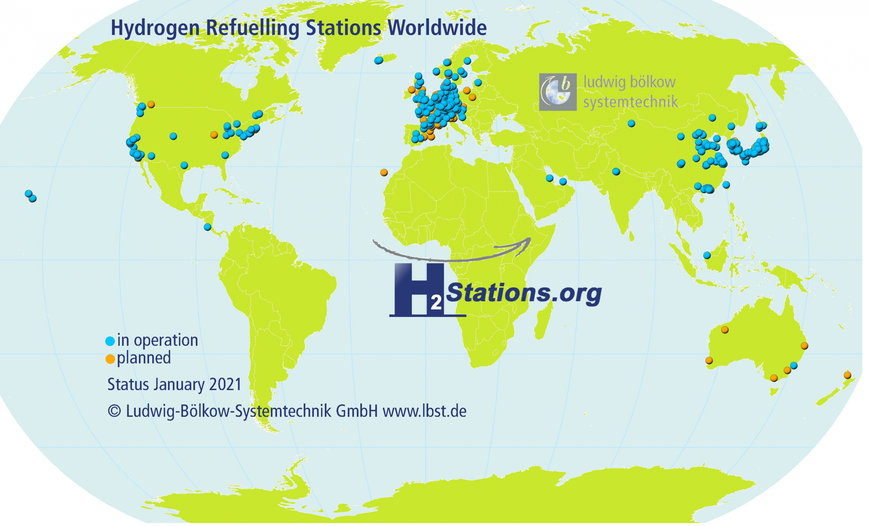
Hydrogen refuelling stations across the world. Source: Ludwig-Bölkow-Systemtechnik.
Globally there are many initiatives to scale up production of hydrogen on mega scale never attempted before. In Germany, major industry players like Mitsubishi Heavy Industries, Shell, ArcelorMittal and Airbus, have joined forces to form the Hamburg Hydrogen Network to reduce emissions. As part of this initiative, a 100-megawatt electrolysis plant for the production of green hydrogen from renewable energy has been announced recently. In recent months, India has announced two megaprojects, as part of its National Hydrogen Mission. The first is led by the Indian subsidiary of US-based renewable energy startup Ohmium International, to launch India's first Green Hydrogen Electrolyzer Gigafactory at Bengaluru. The second is a giga project announced by Reliance Industries, India’s largest industrial conglomerate. This is a multi-pronged initiative that includes a fuel-cell factory, an integrated solar photovoltaic module factory, an advanced energy storage battery factory and an electrolyser factory for production of green hydrogen. Down Under, the Australian government is working on a National Hydrogen Strategy for production and export of commercial renewable hydrogen, over the next few years.

Hydrogen fuel-cell stack by Bosch-Powercell alliance. Image source: Bosch Presse.
Storage – bulk as well as on-board – is another area that poses various challenges as hydrogen is highly combustible. Pure hydrogen can be stored either as a gas or in liquid form. Storage of hydrogen as a gas requires high-pressure tanks that can withstand 350-700 bar (5,000-10,000 psi) tank pressure. Storage of hydrogen as a liquid requires cryogenic temperatures because the boiling point of hydrogen at one atmosphere pressure is -252.8°C. This means the requirements of storage tanks either at production site or distribution point, are very stringent. Storage options today include insulated liquid tanks and gaseous storage tanks. Tanks are made in three broad types: all-metal cylinder, continuous filament with metal liner or composite materials. Most tanks used at present are of metal, which makes them expensive, but those made of composites are even more so. Better and improved production processes of carbon fibre and other composite materials are likely to bring the costs down in future. The hydrogen tank of the Toyota Mirai, for example, has a three-layer structure made of carbon fibre-reinforced plastic consisting of nylon 6 to store hydrogen at 700 bar (10,000 psi).
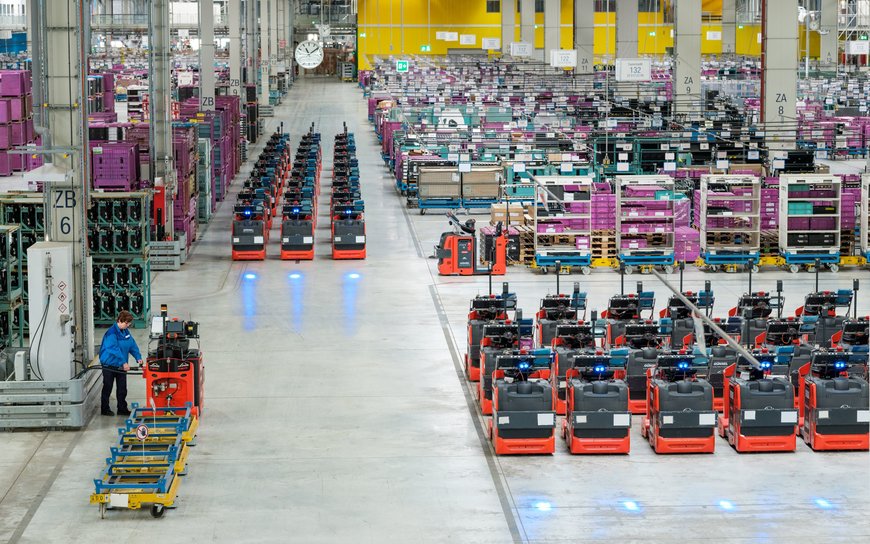
The logistics fleet power by hydrogen at BMW. Image source: BMW Group.
The third part, distribution is also being addressed as the movement to use hydrogen as automotive fuel gathers momentum. Globally, 553 hydrogen refuelling stations are in operation worldwide as of 2020, according to an assessment made by H2stations.org, an information service of Ludwig-Bölkow-Systemtechnik (LBST), a German consulting company for energy supply, hydrogen, mobility and sustainability. The same report also mentions concrete plans already in place for 225 additional refuelling station locations. Europe had 200 hydrogen stations at the end of the last year, 100 of which are in Germany. France is still second in Europe with 34 operating stations, and with 38 planned hydrogen stations it currently shows the strongest growth in Europe. However, while the other European countries focus on publicly accessible passenger car refuelling stations, most of the French stations aim at the refuelling of buses and delivery vehicle fleets. A significantly increasing number is also projected in the Netherlands, where the number of planned stations has increased to 23. In line with plans, the ninth refuelling station was recently opened in Switzerland.
At the end of 2020, there were 275 hydrogen stations in Asia, 142 of them in Japan, and 60 in Korea. The 69 Chinese hydrogen stations in the database are used almost exclusively for the refuelling of buses or truck fleets. The majority of the 75 hydrogen stations in North America continue to be located in California with 49 operating stations.
Conclusion
The road to a cleaner, greener planet minus the climate excesses is going to be a long one. A beginning has been made. A lot depends on ongoing R&D and government regulations for hydrogen to play a meaningful role in this endeavour, and there are sceptics galore. BloombergNEF, the leading strategic research provider covering global commodity markets and the disruptive technologies driving the transition to a low-carbon economy, was initially sceptical about green hydrogen. But based on the optimistic electrolyzer cost scenario, it now believes renewable hydrogen could be cheaper by 2030 in all countries, including the US which has traditionally enjoyed cheaper rates in fossil fuels.
The long term solution for clean energy is decarbonisation, decentralisation and digitalisation. Hydrogen, being an energy carrier rather than a source, fits in this pattern. By using renewable energy to produce hydrogen for storage, it can act as a battery and solve the problem of grid overload on a sunny or windy day.

